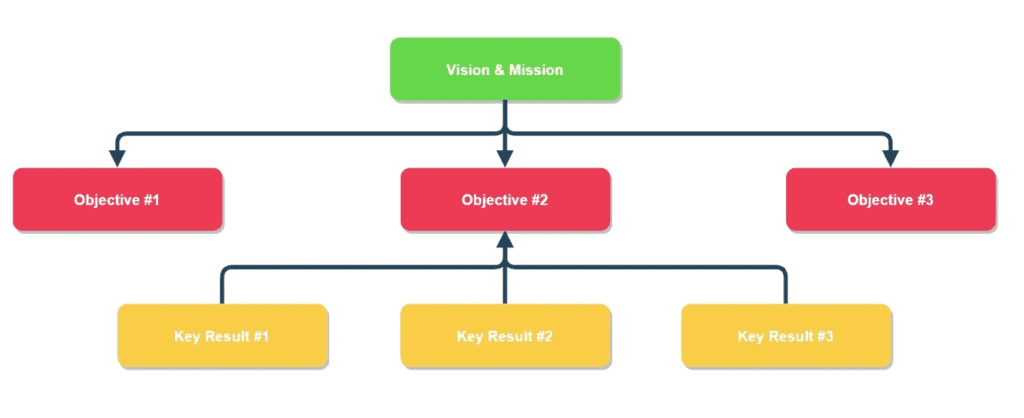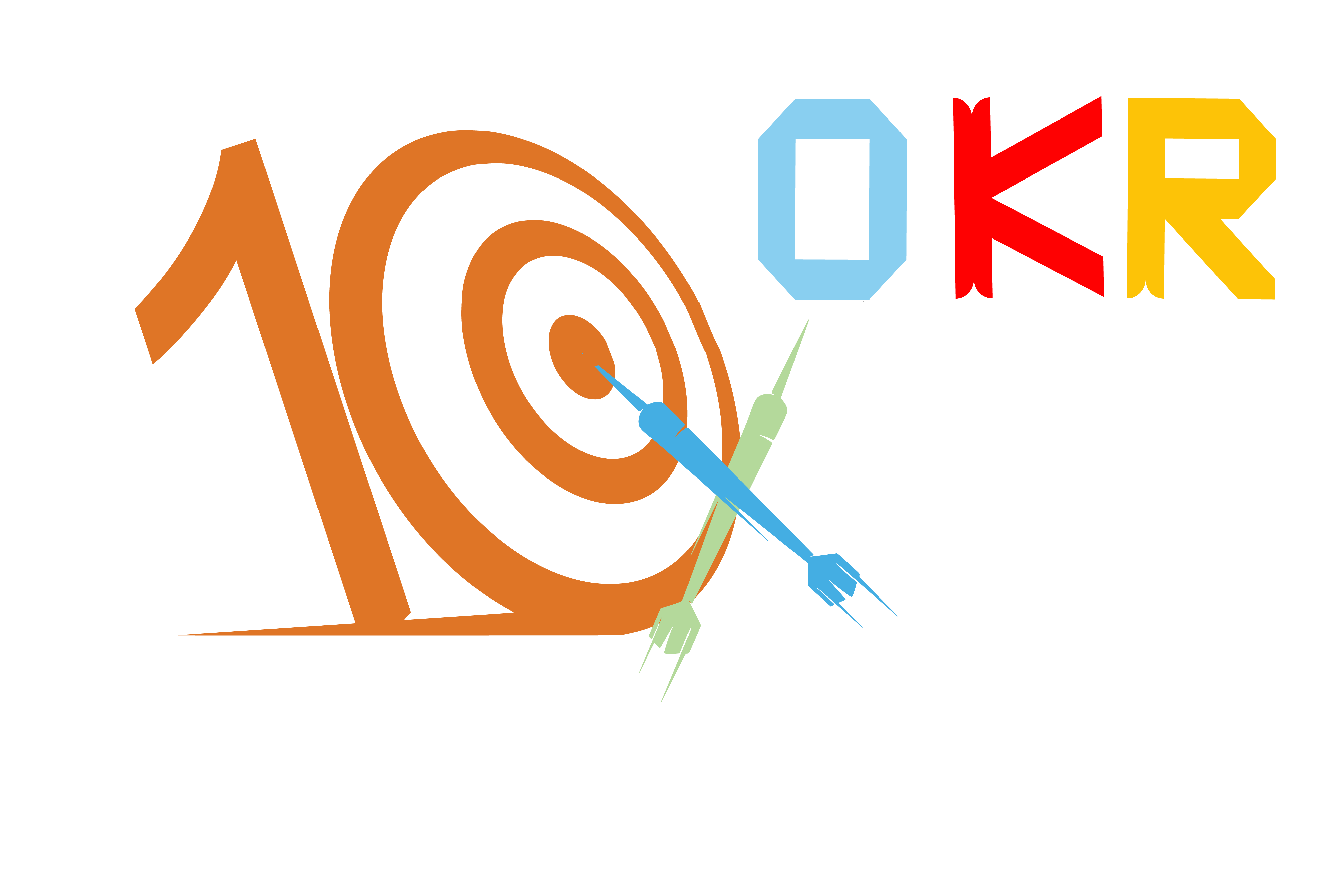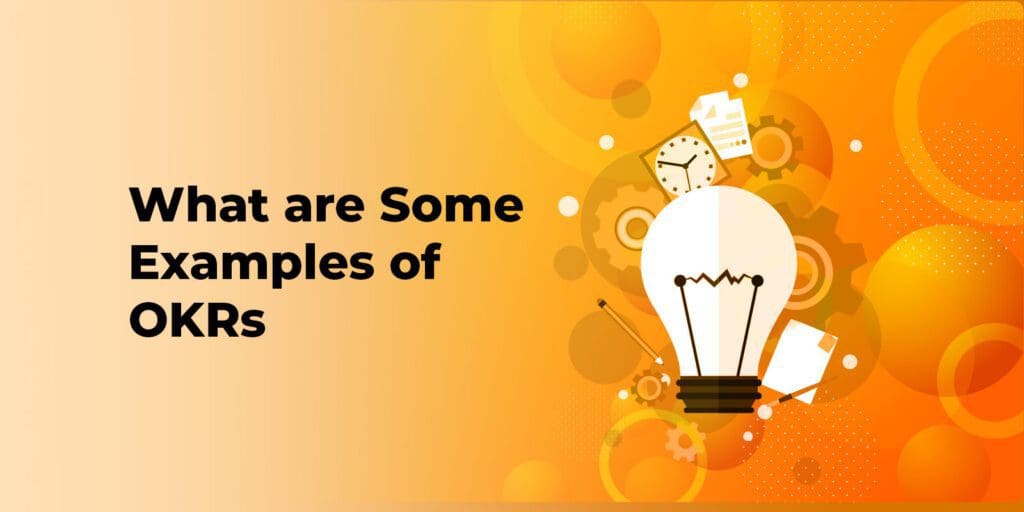Table of Contents
Explore 9 Impactful Examples of OKRs for Business Success
The OKR framework was formulated by Andy Grove for Intel in the 1960s, and it’s a tool for setting and achieving business goals. The acronym OKR refers to Objectives and Key Results, which essentially define the structure of the framework. This collaborative goal-setting methodology can facilitate teams as well as individuals in tracking their progress, aligning with their company’s objectives and developing plans to attain measurable results.
What is OKR?
An OKR approach includes setting a qualitative objective, which outlines what needs to be achieved. The objective is further supported by key results, which track the progress and measure how the objective is being met. Key results are defined as specific and quantifiable. They are time-bound and often involve tangible numerical values.
The OKR framework helps organisations to target essential business objectives and establish achievable targets. It also sets deadlines for these targets and ensures that the goals set by the organisation are in alignment with larger business objectives. However, it is important to note that the OKR approach does not define the overall vision for the company. It does not chart out the long-term business growth strategy, either.
How do OKRs Facilitate a High-Performance Culture?
Clear objectives and tests, alignment, transparency, accountability, and the promotion of a growth mentality are all elements of OKRs that help develop an organisation’s high-performance culture.
Without a proper OKR framework, companies face challenges in cultivating a high-performance culture. Some of the issues without an OKR system include:
- When new tensions arise, and companies find it hard to adapt
- Employees’ lack of motivation or overall misalignment with the goals and objectives of the company
- Incapacity to scale operations according to growing demands.
- Inability to prioritise urgent tasks
How to Create Company OKRs
Now that we know why OKRs matter and how they help a company achieve the objective it has set, let’s look at how to create them. For instance, if you are planning to organise a meeting to set OKRs, John Doerr, the author of “Measure What Matters,” suggests these objectives and key results:
Objective
Enhance your operating efficiency within the next hour.
Key Result 1
End the meeting within the scheduled time frame.
Key Result 2
Receive a quality rating of 4 or higher from the first OKR draft.
Key Result 3
Secure a 100% commitment from all attendees to implement the OKR strategies discussed.


1. The Objective
This is a high-level aspiration that uses a verb at the start to define itself. For instance, Increase sales volume by 20% or Enhance operating efficiency within the next hour
2. Key Results
This deals with the nitty-gritty aspect of the goal and breaks it down. It makes the goal more tangible, realistic, and measurable
It is recommended to limit the number of Key Results to five. Teams and individuals should have a maximum of seven Objectives, and each Objective should be short enough to fit within a line.
Company OKR Example
Companies must keep their vision, mission, and business systems at their disposal in mind when setting company OKRs. The team should be kept in mind when establishing a company OKR framework.
Objective
Achieve exponential growth
Objective Description
Ensuring steady growth demands consistently excelling in the basics.
Key Result 1
Maintain monthly revenue growth at or above 30%.
Key Result 2
Achieve a 100% customer retention rate.
Key Result 3
Maintain the Operating Profit Margin at or above 17%.
CEO OKR Example
The kind of OKR set at the very top, i.e., at the CEO’s range, trickles down to define the rest of the company’s goals. Thus, a CEO must aim to always increase their knowledge base of a specific field by reading and researching well before sharing it with the team
Objective
Sell $20M in bookings
Objective Description
Achieve positive feedback and increase the number of deals sold.
Key Result 1
Win 3,000 deals worth $20M in bookings by December 2023.
Key Result 2
Generate 60,000 marketing-qualified leads
Key Result 3
Establish a marketing team to achieve a 10% increase in leads.
Sales OKR Example
Sales OKR should be number-focused. It should target efficiency and accuracy, and increase the overall ROI. The sales team bridges the gap between changing customer demands and the services/products offered by the company.
Objective
Come out of the market shadows
Objective Description
In order to become a market leader, there should be consistency, hard work, and dedication.
Key Result 1
Increase MRR by $300,000
Key Result 2
Keep monthly customer churn below 3%
Key Result 3
Lower overall expenses by 10%
Customer Support OKR Example
The Customer Support Team focuses on increasing customer satisfaction rates. They ensure that people using a business’s products are getting the best benefit from their investment.
Objective
Be Proactive with Customer Success
Objective Description
Generate a team of happy customers who will stay loyal to the business and increase positive reviews.
Key Result 1
Establish a Customer Success platform to keep track of customer health
Key Result 2
Regularly monitor customer health
Key Result 3
Reach out to customers who appear to be at risk and increase customer satisfaction.
HR OKR Example
HR OKRs aim to be transparent with the company policies and hence are aligned with gaining positive employee feedback. They try to be as engaged as possible with the team and executive leader’s visions.
Objective
Improve Employee Satisfaction by 20%
Objective Description
Implement a comprehensive feedback program to gain feedback and suggestions to increase overall employee satisfaction
Key Result 1
Provide a supportive work environment that increases creative input by 10%
Key Result 2
Gain 100% employee engagement rate
Key Result 3
Improve the company’s diversity and inclusion initiatives through training to improve the work culture.
Marketing OKR Example
Marketing OKRs need to focus on whether a metric, new measure, or marketing strategy adopted by the company is successful or in vain.
Objective
Establish brand recognition through idea association and social media management
Objective Description
Reinforce the brand among a wider audience by creating targeted content for our industry
Key Result 1
Expand the blog subscriber list to 6,000
Key Result 2
Publish four original pieces of content in media or online publications
Key Result 3
Boost the number of social media followers by 50% through Influencer-based promotions.
Design OKR Example
A company’s website or application captures the audience’s attention. Hence, the design team’s OKR focuses on increasing visual communication about the company’s objectives/services.
Objective
Increase User Experience for Mobile App
Objective Description
Let the user experience a smooth and seamless experience from the mobile app
Key Result 1
Conduct a user-focused survey to identify areas for improvement
Key Result 2
Implement new design features that enhance app usability by 50%
Key Result 3
Increase app ratings by at least 2 stars through regular updates and offers.
Project Management OKR Example
An unguided project is financially draining for any business. Thus, proper project management can help a company check off all the listed goals and deliverables. By managing risks and budgeting the company resources properly, a project manager will take the company to greater heights.
Objective
Enhance project planning and execution techniques
Objective Description
By appearing more efficient, we can bring in more clients and improve the overall quality of work and products delivered.
Key Result 1
Implement project management software to facilitate project planning and tracking with the help of AI.
Key Result 2
Boost the number of projects delivered within budget by at least 40%
Key Result 3
Enhance partnerships with stakeholders by holding regular check-ins and status updates.
Quality Assurance OKR
Gaining customers’ trust by delivering high-quality, undamaged products every time is the foundational goal of any business, especially so for manufacturing companies. The quality assurance team makes sure that from development to delivery, the products’ quality and standards stay consistent.
Objective
Improve quality control processes
Objective Description
By holding equipment use tests and buying more spare parts, the quality control process can become more efficient. This will lead to the creation of products without defects.
Key Result 1
Reduce the number of defects by 40% by installing new spare parts.
Key Result 2
Increase the efficiency of testing processes by 20%
Key Result 3
Increase customer satisfaction with high-quality products by 35% and increase online review rates.
In Conclusion
The examples of OKRs presented here serve as guiding lights for achieving success through effective goal-setting. By examining these real-life scenarios, we have witnessed how OKRs can drive remarkable results and foster a culture of growth and collaboration.
These examples emphasize the importance of setting clear, measurable objectives that align with the overarching vision of the organization. Additionally, they showcase the significance of defining key results that act as milestones towards goal attainment.
Are you ready to take your OKRs to the next level? Sign up for free now 10xOKR Home – 10X OKR!
FAQs
How can we use UX in our OKR implementation and strategy as a more strategic element?
The best method for UX to participate in creating OKRs is to bring a thorough understanding of the client to the KR discussion. Product discovery is another effective UX element that contributes to the success of OKR.
Can OKRs be used in public sectors/services?
Yes! This is one of those situations where it’s unfortunate they are not used more frequently as they make so much sense.



